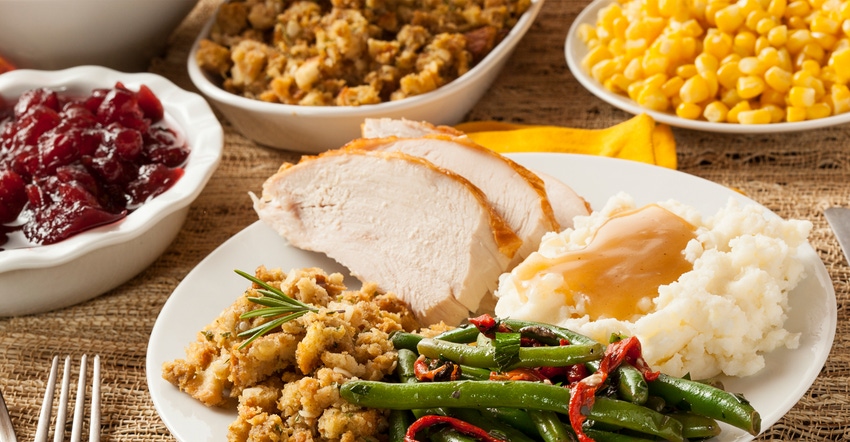November 24, 2021

There’s no doubt that the bird is the star of the show at most family holiday dinners, so it’s fair to wonder whether all the turkey talk this time of year is going to be good for the waistline.
To that, Sandy Procter, Kansas State University nutrition specialist, says, well … it depends.
“Turkey has a lot of basically healthful qualities,” Procter says. “But what we do to prepare it can either help to maintain that healthy name tag, or it can completely change its complexion.”
In other words, basting, brining and frying may be inviting extra fat or sodium to an otherwise healthy meal.
More consumption
In the United States, “we definitely have embraced the idea of eating turkey,” Procter says. “We eat about twice as much as we were eating 50 years ago, because we’ve learned about the positive things it can do for our health.”
Data from 2019 indicate that Americans eat about 16 pounds of turkey per person each year, or about 5.3 billion pounds of turkey combined.
“It’s a great source of protein, and our bodies need protein to build and repair bones, muscles, cartilage, skin, blood and tissue,” Procter says.
She adds that roasted turkey is low in fat, with white meat lower in fat compared to dark meat. Most fat in poultry is located right under the skin.
“Turkey is also a good source of beneficial vitamins and minerals,” Procter says, including magnesium, niacin, iron, choline, phosphorus, potassium, B12 and zinc.
She adds that turkey is an “excellent source of selenium,” a trace element that helps the body make antioxidant enzymes. “Some studies have shown that a diet rich in selenium can help to prevent certain types of cancers, including bladder, breast and lung cancer,” she says.
Diet considerations
Turkey and other types of poultry are considered part of what is commonly called the MIND (Mediterranean-DASH Intervention for Neurodegenerative Delay; DASH stands for Dietary Approaches to Stop Hypertension) diets, and thought to be beneficial to the brain.
“Poultry, as a regular part of our eating patterns, may help to slow mental decline associated with Alzheimer’s disease and other causes of dementia,” Procter says. “[Researchers] recommend eating poultry products about twice a week, especially for older adults. It’s not the entire solution, but it may be part of the answer that we can address through healthier eating.”
And, of course, everyone has experienced that after-dinner nap that turkey brings on.
“It’s true that turkey contains tryptophan, an amino acid that has this property that can help you have better sleep,” Procter says. “I think for most of us, the sheer volume of what we eat as part of the turkey dinner is also what makes us sleepy.
“I’m not sure it can all be attributed to the tryptophan in the turkey.”
Portion control
In any case, a serving of common sense with the turkey dinner — including controlling portion sizes — is a good idea if you’re concerned about gaining weight this holiday season. Procter says adding a brisk walk after dinner instead of extra pie is another healthy idea.
“Holiday foods themselves are not the real problem,” she says. “In many cases, it’s how much we eat, how often we overeat and how active we choose to be over the holidays that tend to affect our weight.”
More information about healthy eating during the holidays and year-round is available online from K-State Research and Extension's food, nutrition, dietetics and health program.
Source: Kansas State Research and Extension is solely responsible for the information provided and is wholly owned by the source. Informa Business Media and all its subsidiaries are not responsible for any of the content contained in this information asset.
You May Also Like




